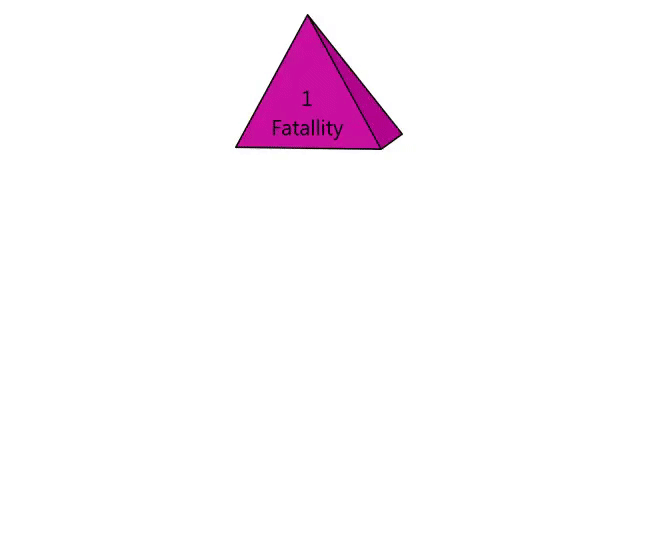reported workplace injuries in Serbia during 2019; which is an increase compared to 2018 (10404)
%
of workers is exposed to work in an unnatural position at least 25% of their working hours
%
of workers in Europe perform repetitive tasks involving activation of the upper extremities
%
of absences from work are linked with nonergonomic execution of repetitive work assignements
Serbian government reported 10404 workplace injuries (7 deaths, 1310 serious injuries, and 9087 minor injuries) during the 2018 – while in 2019 number or reported injuries increased to 13306 (14 deaths, 1830 serious injuries and 11462 minor injuries) [1]. Besides direct injuries, studying non-ergonomic execution of repetitive tasks is important since they cause long-term injuries – which typical examples are musculoskeletal disorders (MSD) and backup pain. In 2017, the World Health Organization identified MSD as the leading cause of disability in four of its regions [2]. European reports indicate that 33% of workers (32% of men and 24% of women) spend at least 25% of their working time on manual work (which includes work with cargo) [3]. In addition, 47% of the workforce is exposed to work in an unnatural position at least 25% of their working hours; and 33% of workers in Europe perform repetitive tasks involving activation of the upper extremities. Conditions that can be linked to these problems account for 55% of absences from work (~ 1.6% of annual GDP, or ~ 35,000 euros per injured) [4]. For companies, this causes a shortage of trained workers, reduced productivity, and an increase in the cost and complexity of the production. For employees, in addition to the job loss (or forced retraining), MSD also have negative long-term consequences in the form of permanent disabilities and inability to perform everyday activities. Occupational safety and health.
Occupational safety and health
Occupational safety and health (OSH) is a multidisciplinary scientific field that aims to improve the safety, health, and wellbeing of people in the workplace environment [5]. During the last decade, goals and criteria of workplace safety have been increased on the global level. Particularly, nowadays industries have a tendency to reach the “zero goal” , as the most appropriate number of injuries that occur in workplaces. To reach this goal, “zero-incident companies” focus their attention and activities on the proactive identification of accident precursors, in which efficient control and timely managed could prevent the occurrence of injuries.
Safety triangle
The occurrence of risky situations is inevitable in almost every workplace. The mentioned links between causes and accidents in the workplace is known as the Safety triangle or Heinrich’s Pyramid or Bird’s Pyramid (Figure 2). Namely, in 1931, Herbert William came to the conclusion that every serious injury is preceded by twenty-nine minor injuries; or three hundred incidents that passed without workplace injuries. Thirty years later, Frank Bird expanded Henry’s work for insurance companies in 1961 [6]. By considering the archive of about two million incidents in over 300 companies, he came to the conclusion that: “every serious injury is preceded by ten minor, or thirty incidents that cause damage to work equipment (but not to people), or six hundred incidents that did not cause injuries to employees and damage to equipment. In 2003, a study by ConocoPhillips Marine upgraded the existing model by concluding that every fatal accident at the workplace is preceded by 300,000 unsafe acts/events [7]. Today, the explained relationship of safety at work is called the “safety triangle” or the “Henry’s triangle” or the “Henry’s pyramid” .
Importance of timely and objective detection of unsafe conditions and unsafe acts
According to the Safety triangle, proactive identification of unsafe conditions (UC) and unsafe acts (UA) have the greatest impact on the overall workplace safety [8, 9]. Although there are clear recommendations proposed in international and national regulatory standards, managing workplace safety in the traditional way has proven to be a laborious and complex process. Briefly, the challenge of efficient management of UC/UA is explained with differences in perception that individuals have about safety risks, which could depend on their previous experience and training on the topic of OSH [10, 11]. Moreover, considering the size of factories and number of employees, the major challenge for safety managers is how to timely and objectively detect accidents’ precursors and alert employees? This problem is expected to escalate with the ongoing digitalization and increase in the amount of data (images and signals) that need to be considered efficiently. Thus, there is a growing demand for dedicated ICT solutions that could help to prevent accidents through digitized management of the mentioned safety management process.
References
- РЕПУБЛИКА СРБИЈА МИНИСТАРСТВО ЗА РАД, ЗАПОШЉАВАЊЕ, БОРАЧКА И СОЦИЈАЛНА ПИТАЊА УПРАВА ЗА БЕЗБЕДНОСТ И ЗДРАВЉЕ НА РАДУ – Извештај о раду за И 2019 годину (https://www.minrzs.gov.rs/sr/dokumenti/izvestaji/uprava-za-bezbednost-i-zdravlje-na-radu).
- World Health Organization (2017) Guidelines on community-level interventions to manage declines in intrinsic capacity.
- Occhipinti E. et al. (2016) A toolkit for the analysis of biomechanical overload and prevention of WMSDs: Criteria, procedures and tool selection in a step-by-step approach. International Journal of Industrial Ergonomics, 52, 18-28.
- EUROSTAT (2010) Health and Safety at Work in Europe (1999-2007) A Statistical Portrait Publications Office of the European Union, Luxembourg.
- Hollnagel E. (2014) Safety-I and Safety-II: the past and future of safety management. CRC Press.
- Heinrich W. (1931) Industrial accident prevention: a scientific approach. New York: McGraw-Hill.
- Hughes, Phil; Ferrett, Ed. (2009) Introduction to Health and Safety at Work. Elsevier. p. 86. ISBN 9781856176682.
- Heinrich H.W. (1941) Industrial accident investigation – A Scientific Approach, McGraw-Hill Book Company, New York and London.
- Gnoni M. G. et al. (2012) Near-miss management systems: A methodological comparison. Journal of Loss Prevention in the Process Industries, 25 (3), 609-616.
- Gnoni M. G. et al. (2013) “Lean occupational” safety: An application for a Near-miss Management System design. Safety Science, 53, 96-104.
- Gnoni M. G. et al. (2017) Near-miss management systems and observability-in-depth: Handling safety incidents and accident precursors in light of safety principles. Safety Science, 91, 154-167.



